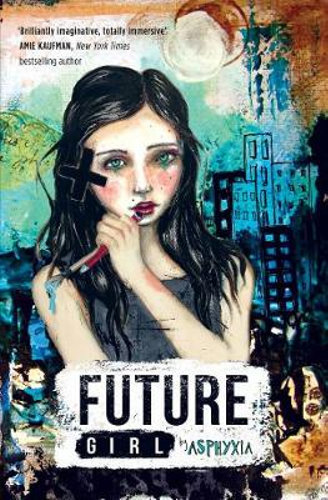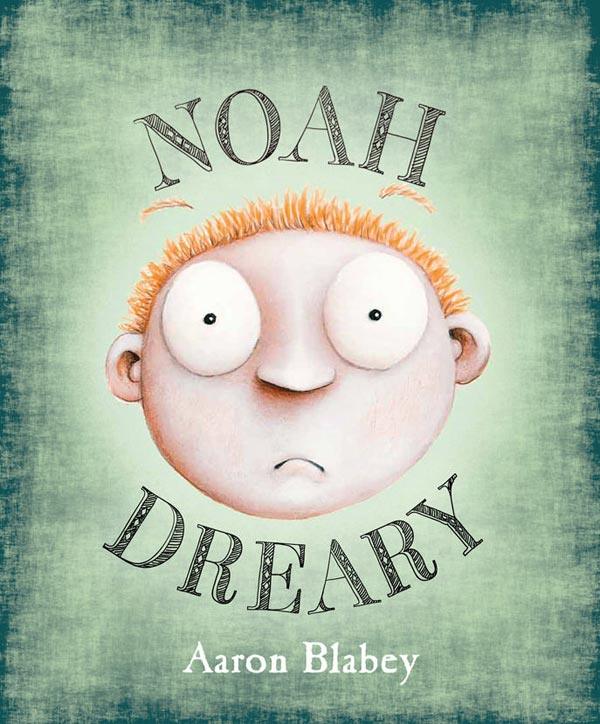Asphyxia, Future Girl, Allen and Unwin, September 2020, 384 pp., RRP $24.99 (pbk), ISBN 9781760294373
Reading Future Girl is an incredibly immersive, tangible experience. It is an important book, one that every young adult should read. Written and illustrated by Deaf artist and writer, Asphyxia, Future Girl is an Own Voices story that proves illustrated books are not just for children.
Future Girl is portrayed as the art journal of Piper McBride, a 16-year-old Deaf teenager living in a near-future dystopian Melbourne. Her mother has raised her to hide her deafness behind oral skills and the ability to lipread. But Piper has never felt at ease communicating with hearing people and therefore has very few friends. It is not until she meets Marley, a CODA (Child of a Deaf Adult) and his wonderfully expressive Deaf mother, that she learns how beautiful communication can be. With her new-found confidence, Piper begins to carve a path away from her mother’s and learns to fight for what she needs.
This enthralling coming-of-age story is an authentic insight into the Deaf community for hearing readers and a mighty voice for Deaf readers. Yet, although Piper is Deaf, the reader is never overloaded by that one aspect of her character.
Asphyxia has built an eerily believable future where the government exerts its resources to constantly censor and monitor the general population. Moreover, the government has vilified ‘wild’ food, and most of the population is forced to buy scientifically manufactured food.
When Piper’s mother, the leading food scientist, is dismissed from her job, she and Piper quickly run out of money. Piper can’t find a job to help out – no one is willing to accommodate a Deaf employee. They are forced to rent out their house and move into the backyard shed. And when high fuel costs cause a nationwide shortage in rations, they run out of food. Through Marley and his mother, Piper learns to grow her own food and to question the government’s insidiously oppressive actions.
The novel is an object of artistic beauty. Every page is a work of art, from full-page portraits and garden maps to sketches and stencils.
Artwork aside, the most interesting concept in Future Girl is the dialogue. Because Piper is Deaf, much of her communication is either via lipreading (whether or not she is wearing her hearing aid) or through Auslan sign language. Asphyxia makes the reader aware that lipreading is incredibly difficult, something that popular media rarely portrays. The dialogue is written as Piper sees it (e.g., “guv the letriss situation” is how “given the electricity situation” looks when formed on the lips) so that the reader can decode language along with her. Through Piper’s experiences of exclusion and misunderstanding, a hearing person reading Future Girl gets a glimpse of the struggle a Deaf person faces when trying to communicate in a hearing world.
Asphyxia further creates this immersive experience by not falling for the familiar YA tropes. She doesn’t kill off the parents – in fact, the development of parental relationships is an integral part of the story. She doesn’t throw in a handsome prince to rescue Piper – Marley’s flaws create a space for Piper to learn to rely upon herself.
The idea of voice undercurrents the book. Whether signed, spoken, written, texted or spray painted on a wall, all voices matter.
This book was eye-opening about some of the issues around accessible communication for the Deaf community and the credible suggestion that young people can take action when those in power lead us down the wrong path.
You won’t find another book quite like this one.
Highly recommended.
Reviewed by Geni Kuckhahan






